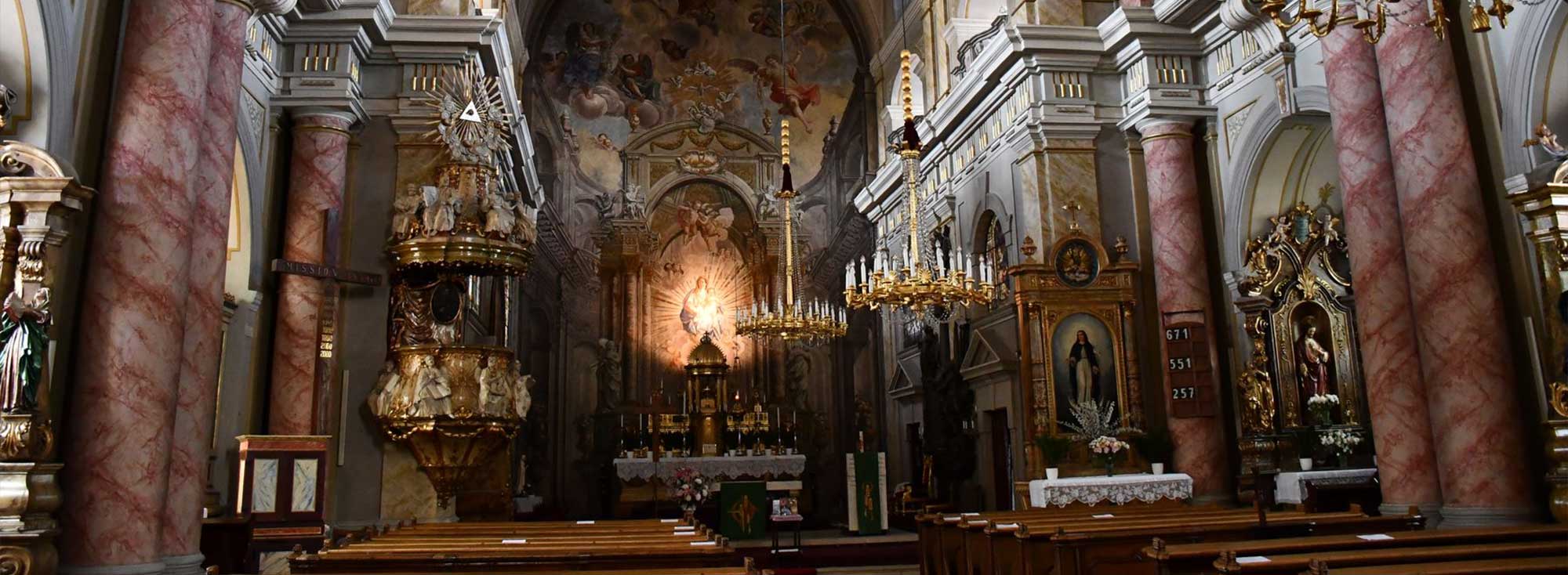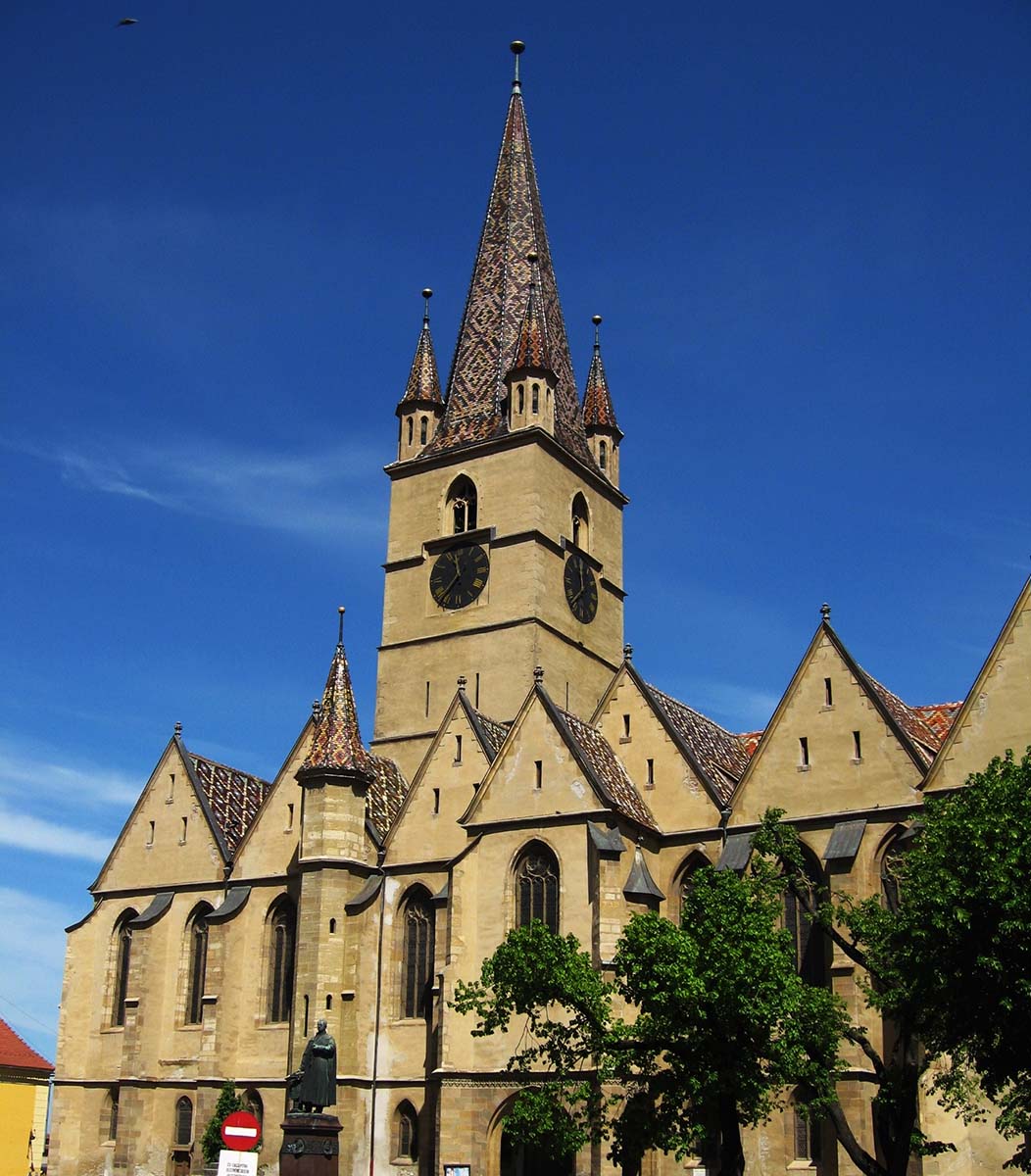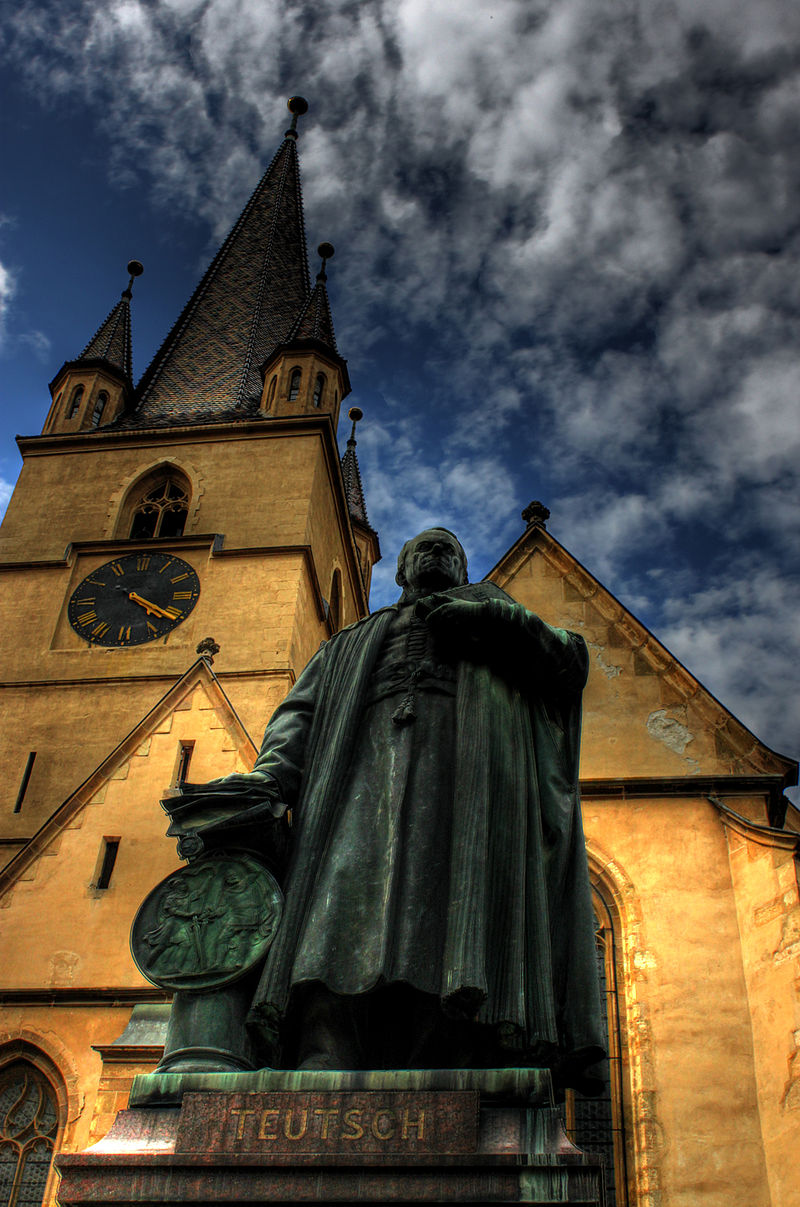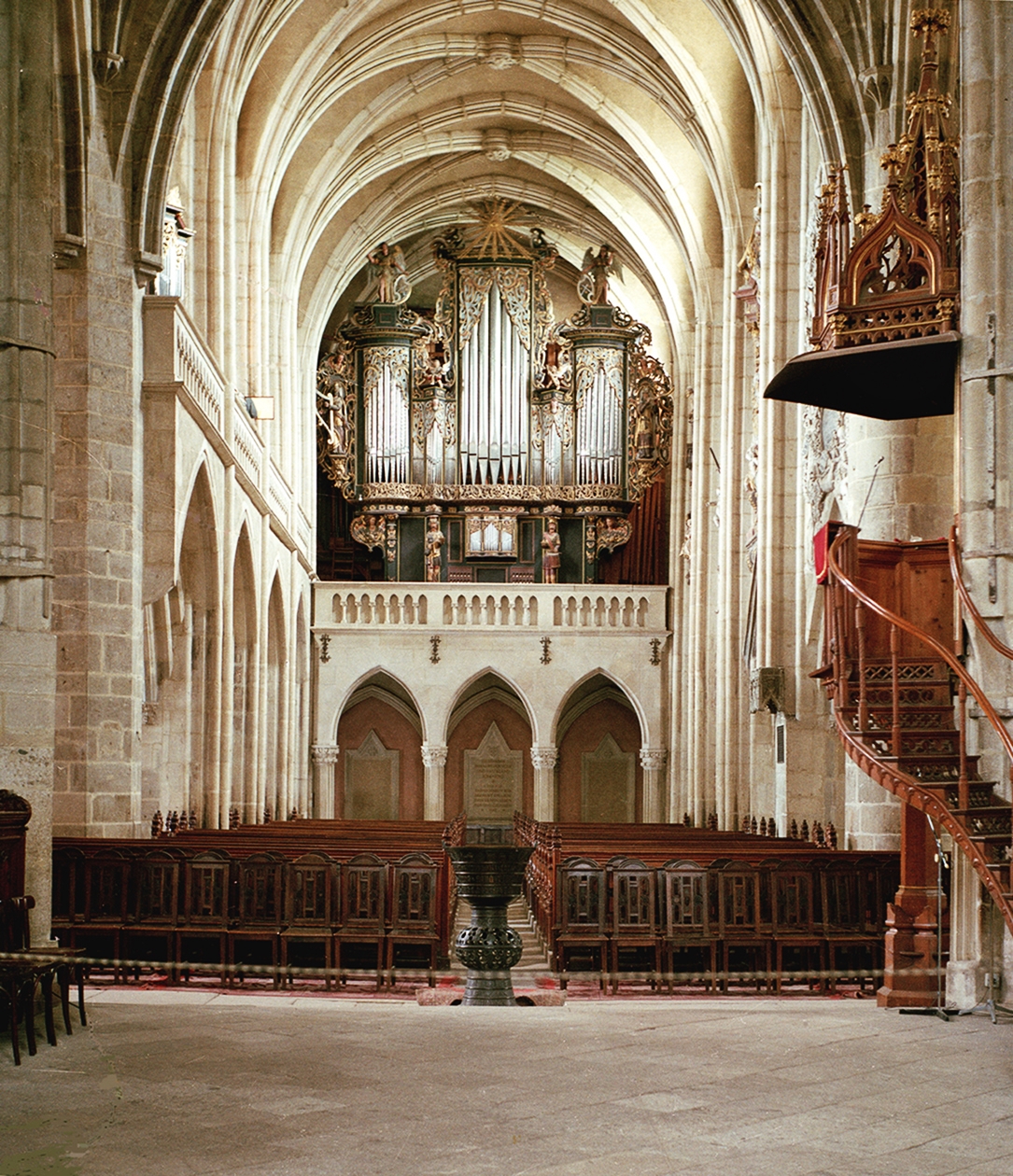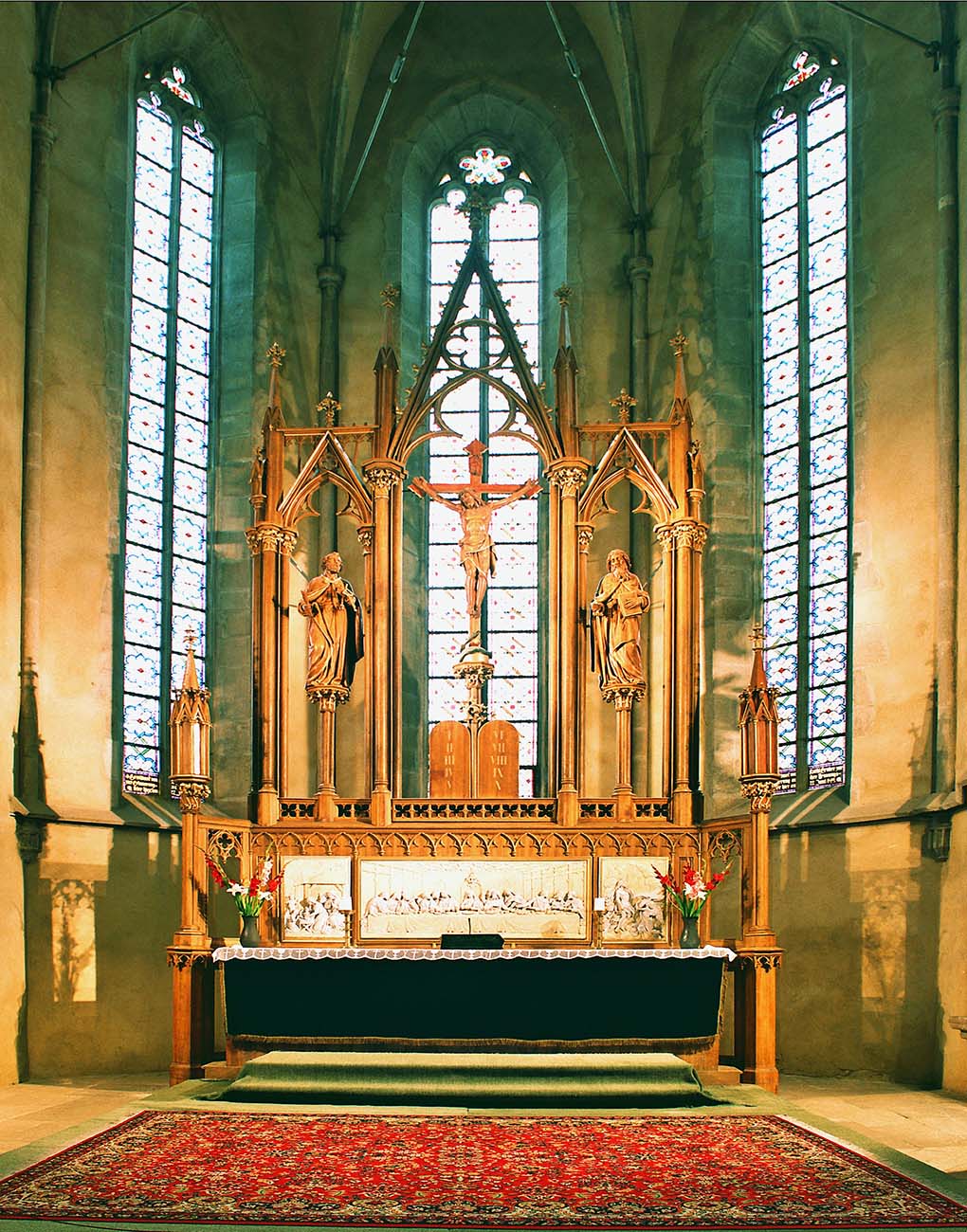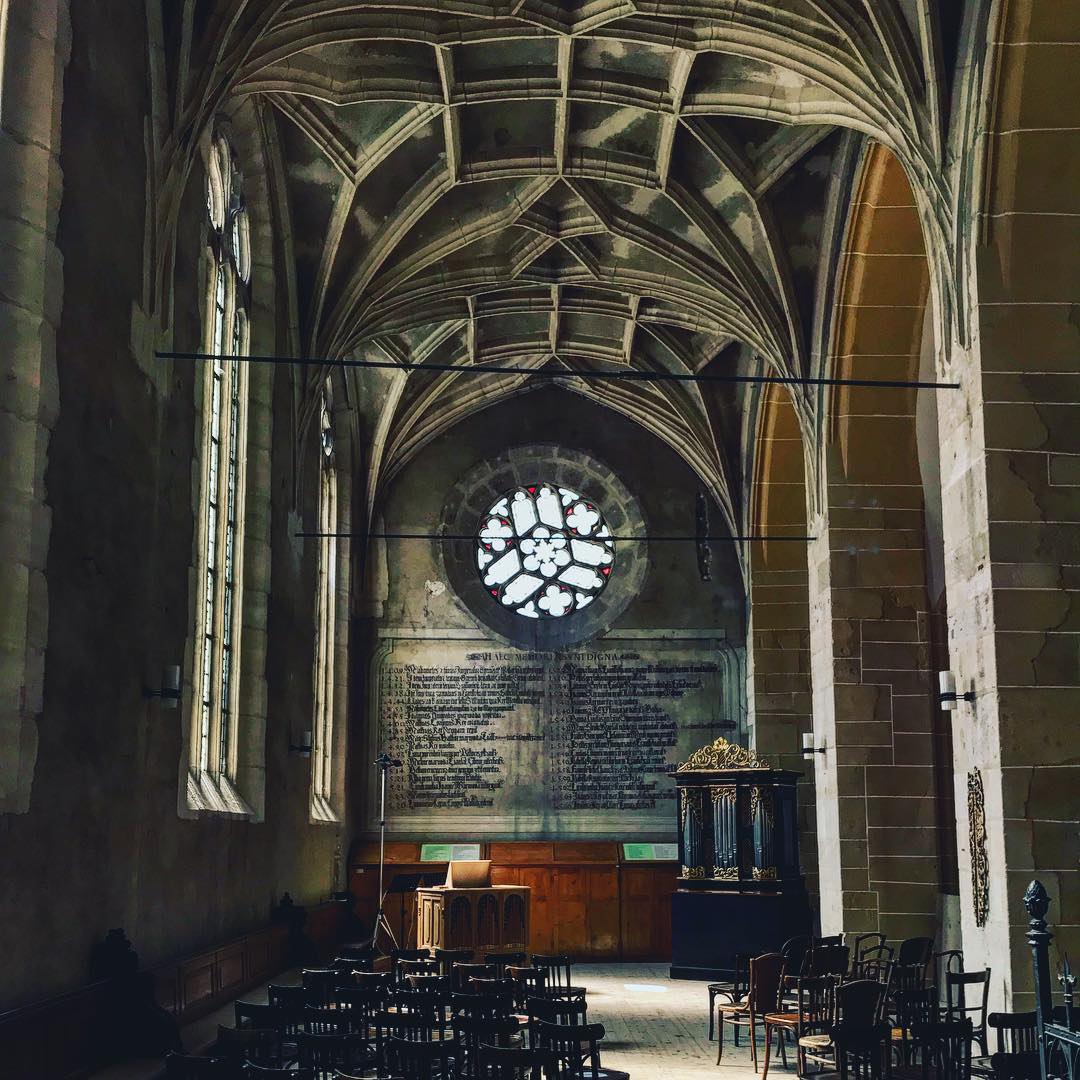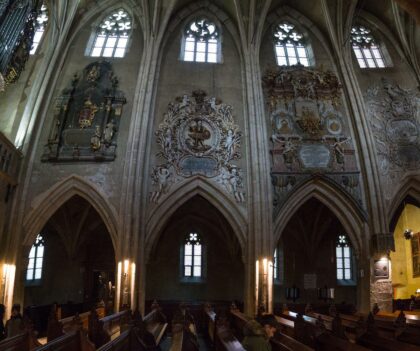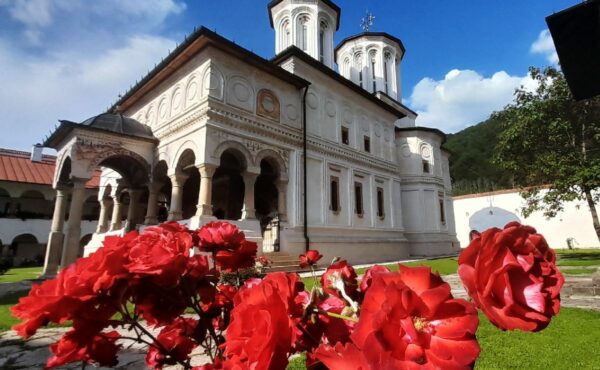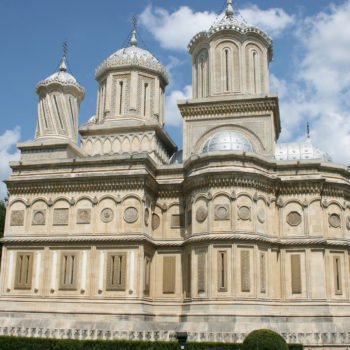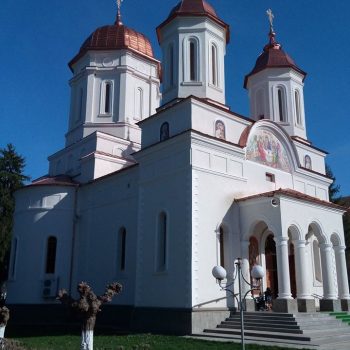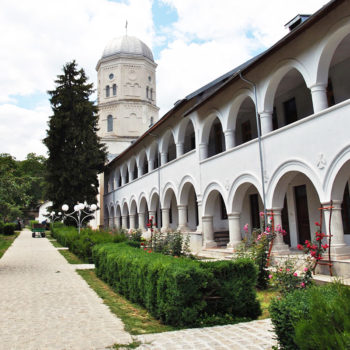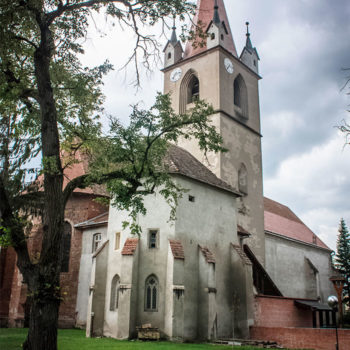Brief description: The Evangelical Cathedral of Sibiu is one of the oldest and most impressive Gothic buildings in Transylvania. It is the cathedral of the Evangelical Church C.A. and the parish church of the community in Sibiu, having in the parish the largest community of Lutheran believers in Romania.
More details
The current form is the one after the renovation in 1520, on the structure of the old Romanesque basilica from the twelfth century. In front of the church is the statue of Bishop Georg Daniel Teutsch (1817-1893), erected in 1899. The interior of the church is in Gothic style, with arched vaults and tombstones on the northern walls. The church is located in Piața Huet f.n. The building is dominated by the 7-level tower, with four turrets on the corner of the roof, a sign that the city had the right to condemn (in Latin ius gladii, literally “the right of the sword”). With a length of approximately 74 m, the church ranks third in Romania, after the Black Church in Brașov and the Cathedral of Saint Michael in Alba Iulia.
The choir of the cathedral is on the balcony on the south side and contains a baroque organ made by a Slovak craftsman in 1671, which replaced the first organ brought to Sibiu in 1585. In 1914, the great organ of the church was installed, the largest organ in south-eastern Europe, and in 1997 it was completely renovated.
The church is a large edifice in Gothic style, with a plan consisting of a polygonal choir composed of three bays, flanked to the north by a sacristy; a transept follows to the west, then the central nave and the two lateral ones; in the west, the massive tower was built, finally embedded in a narthex formed, in turn, of three naves.
The oldest part of the edifice, as it appears from a document from 1371, was the choir, but very probably the basilica plan of the church, including the transept, had also been finalized. It was also then that the construction of the tower had begun, raised only to the height of the lower floors. At that time, the church dedicated to St. Mary presented itself as a basilica with transept and sacristy, the side aisles being only half the width of the main nave.


